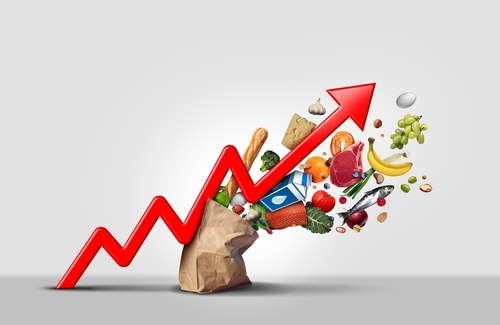|
Getting your Trinity Audio player ready...
|
Passover & Easter Grocery Costs in NYC Soar Amid Inflation, Supply Shocks, and Bird Flu Fallout
Edited by: Fern Sidman
This year, the High Holy Days come with a particularly sobering twist—not of wine or tradition, but of sticker shock. According to a comprehensive analysis by The New York Post, inflation has sunk its claws deep into the heart of both Easter and Passover preparations, pushing the cost of holiday staples to historic highs. For New Yorkers and families across the nation, the soaring price tags are not just inconvenient — they are reshaping the way people celebrate.
While the symbolism of Easter eggs has long stood for renewal and rebirth, this year they also represent economic pressure. As The New York Post reported, the average cost of Easter groceries has climbed to $106.40, reflecting an 11% increase from last year — or an additional $10.31 out of pocket.
Even though the avian flu crisis has abated somewhat, and egg prices have dropped slightly from their peak in February, the cost of a carton of eggs in New York City is still nearly 40% higher than a year ago. The supply chain may be partially stabilized, but consumers are still shelling out more. In fact, the situation has grown so dire that some New Yorkers are reportedly turning to decorated potatoes in lieu of eggs. Certain retailers, The New York Post noted, have taken a bold step — eliminating eggs from their holiday baskets entirely.
The crisis stems largely from the impact of bird flu, which has decimated flocks across the United States, killing more than 166 million birds, according to data cited by The New York Post. While the U.S. sought relief by turning to egg imports from Brazil, Turkey, and South Korea, a new wave of tariffs announced Wednesday threatens to derail that progress, potentially pushing prices even higher in the coming weeks.
Passover Prices Climb Even Higher
The financial pinch is even more pronounced for Jewish families preparing for Passover, which begins at sundown on April 12. As The New York Post report revealed, a traditional bag of Passover groceries now costs $124.51, marking an 18.1% increase — or $15.10 more — compared to last year.
Among the most heavily impacted items is handmade matzah, a key ritual food with deep religious significance. Prices for handmade varieties, typically sold in specialty shops, have skyrocketed 25%, making this cherished symbol of liberation an expensive addition to the Seder table. Fortunately, The New York Post report found that packaged matzo has remained relatively stable in price at major retailers — though that stability comes with a caveat. As consumers learned last year, at least two popular brands were reportedly affected by shrinkflation, offering smaller portions for the same price.
One rare bright spot comes from the meat aisle. Brisket, a beloved centerpiece of many Seder meals, has not seen significant price increases this season. According to NYU economist Lawrence White, that’s no coincidence. “The action’s been at the poultry level – other livestock and their products not so much,” he told The New York Post, underlining how the bird flu outbreak has disproportionately impacted poultry and eggs, while beef and other meats have remained relatively unaffected.
However, not all traditional fare has escaped the inflationary spiral. Gefilte fish, another Passover staple, has risen 23% in price. Even macaroons, a familiar dessert on many Seder plates, have not been immune to the trend, with their cost also experiencing a notable uptick.
What emerges from The New York Post report is a portrait of holidays under economic strain — where cherished traditions are re-evaluated in the face of financial stress. For both Easter and Passover observers, this year’s celebrations come with a side of hard choices. Whether it’s opting for potatoes over eggs, skipping specialty foods, or adjusting portion sizes, families are being forced to weigh the sacred against the sustainable.
And with new trade policies threatening to worsen the situation just as some relief was taking hold, the outlook for future holidays remains clouded with uncertainty. What’s clear, as The New York Post report illustrated, is that the inflation wave is far from over — and its effects are being felt in the most intimate corners of American life: around the dinner table, during moments of tradition, faith, and family.





Fern, don’t you have more fundamental serious news to consider? And why make up these bogus stories about bird flu? What gibberish!